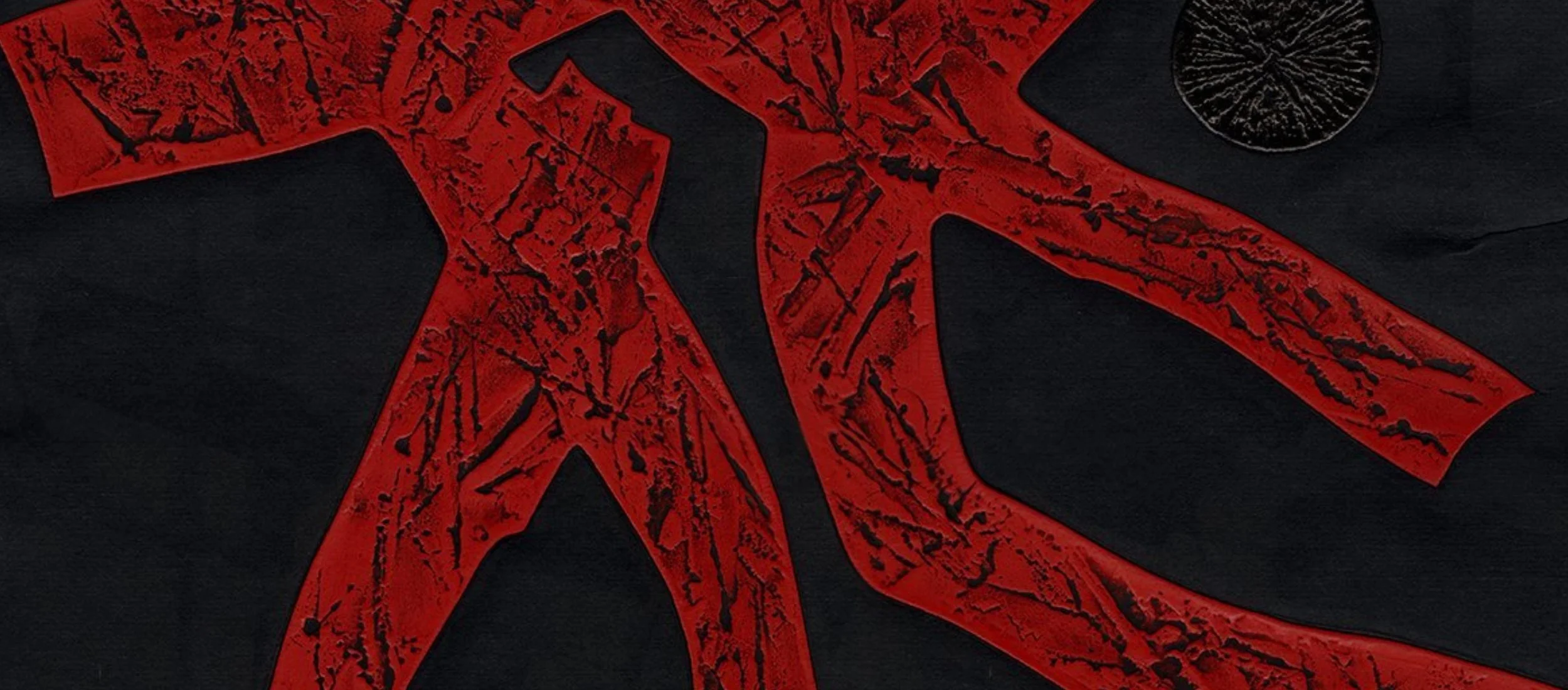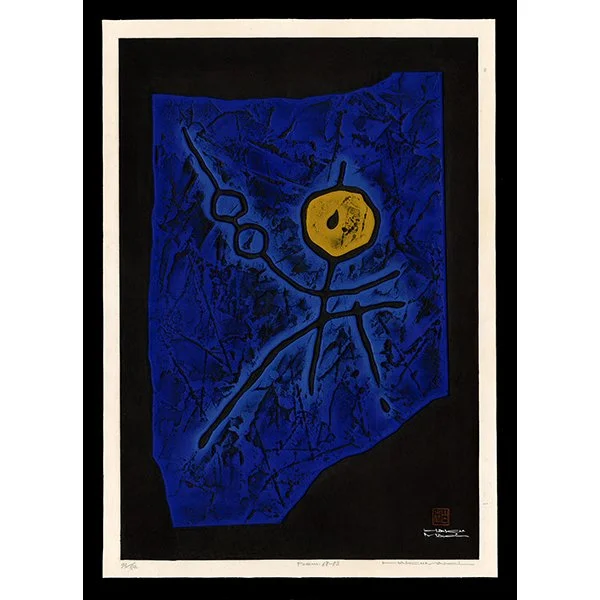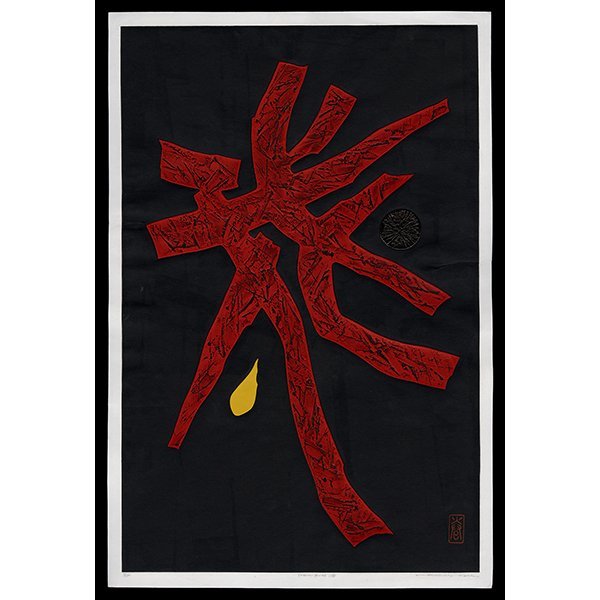MAKI
COLLECTING JAPANESE PRINTS FEATURED CONTEMPORARY ARTISTHaku Maki
1924 - 2000
Profile at a Glance:
Sosaku Hanga artist
Originally trained as a kamikaze fighter pilot
Learned printmaking from Koshiro Onchi
Utilized cement and plaster to produce printing blocks
Influenced by Onchi’s Poem series, created his own Poem series utilizing semi-abstracted kanji.
Maejima Tadaaki, also known as Maki Haku, was a twentieth-century sosaku hanga artist born in 1924 in Asomachi, Ibaraki Prefecture. During his adolescent years, Maki was drafted into the Pacific War as a kamikaze fighter pilot; fortunately, the Japanese surrender was announced prior to Maki's scheduled airstrike, thus saving his life. Maki returned to civilian life as a teacher at a local high school while continuing his own studies, and graduated from the Ibaraki Normal School in 1945.
Five years later, he adopted the go, or artist name, Maki Haku. Maki pursued a career as an artist from 1950 on, learning printmaking techniques from sosaku hanga master Onchi Koshiro. He became a member of the Modern Art Society in 1958 and Nihon Hanga Kyokai.
From the late 1950s throughout the early 1960s, Maki produced deeply-embossed prints of traditional Chinese characters. He experimented with natural wood grains accentuated by wire brushes, and later worked with cement relief built from wooden blocks or cardboard; these particular techniques give his prints an almost three-dimensional quality. Maki was sufficiently old fashioned in signing his prints in kanji rather than kana syllabary and using red seals in the style of traditional paintings. His pottery shapes, too, are enriched with prominent red seals. As he continued to develop as a professional artist, Maki Haku participated in the Tokyo International biennales of 1957 and 1960, as well as exhibitions in Pistoia, Italy.
During his later years, Maki worked with ceramic bowls and produced designs of persimmons and trees. He passed away in 2000 at the age of seventy-six from cancer.





